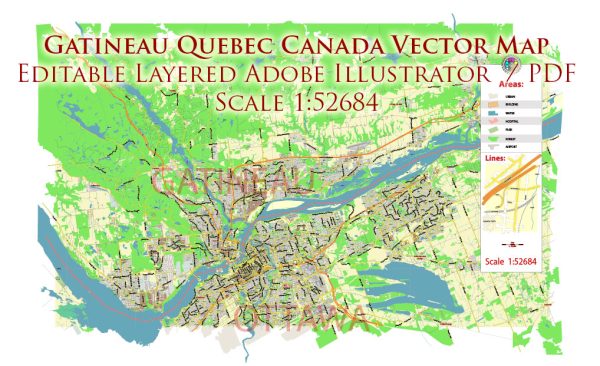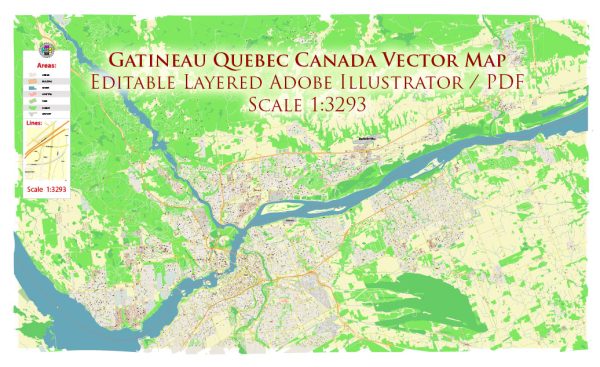Gatineau is a city located in the province of Quebec, Canada, and is situated directly across the Ottawa River from Canada’s capital city, Ottawa. The city has a rich history that is closely intertwined with the history of the National Capital Region and the development of Canada itself. Here is a brief description of Gatineau’s history:
- Indigenous Peoples: The area now known as Gatineau has a long history of Indigenous habitation, with the Algonquin people being one of the prominent Indigenous groups in the region. They have lived in the Ottawa Valley for centuries, long before European contact.
- European Settlement: The first European settlers in the Gatineau region were primarily French fur trappers and traders who arrived in the 17th century. The French established trade routes and forts in the Ottawa Valley, which played a vital role in the fur trade industry during the colonial period.
- British Control: After the British conquest of New France in 1763, the Ottawa Valley, including what is now Gatineau, became part of the British North American territory. The British established military outposts and further developed the region.
- Lumber Industry: In the 19th century, Gatineau became a center for the booming lumber industry in Canada. The Gatineau River and the surrounding forests were rich in timber, and this industry played a significant role in the economic development of the region.
- Urbanization: The city of Gatineau, originally known as Wright’s Town (after its founder, Philemon Wright), grew as a result of the lumber industry. It was officially incorporated as a city in 1875. The city’s name was later changed to Gatineau in 2002.
- Canadian Capital Region: Gatineau’s proximity to Ottawa, the capital of Canada, has made it an integral part of the National Capital Region. The two cities share a close relationship, with many federal government institutions, embassies, and cultural attractions located in the region.
- Cultural Heritage: Gatineau has a rich cultural heritage, and the region features several museums, historical sites, and natural attractions. Gatineau Park, one of the city’s most famous landmarks, is a vast conservation area offering outdoor activities and scenic beauty.
- Bilingual and Multicultural: Gatineau is known for its bilingual and multicultural character. Both English and French are widely spoken, and the city embraces a diverse population.
Gatineau’s history reflects its evolution from a French fur trading post to a bustling lumber town and, today, a modern city in the heart of the National Capital Region. Its location, cultural heritage, and role in the governance of Canada make it a unique and historically significant place.



 Author: Kirill Shrayber, Ph.D.
Author: Kirill Shrayber, Ph.D.